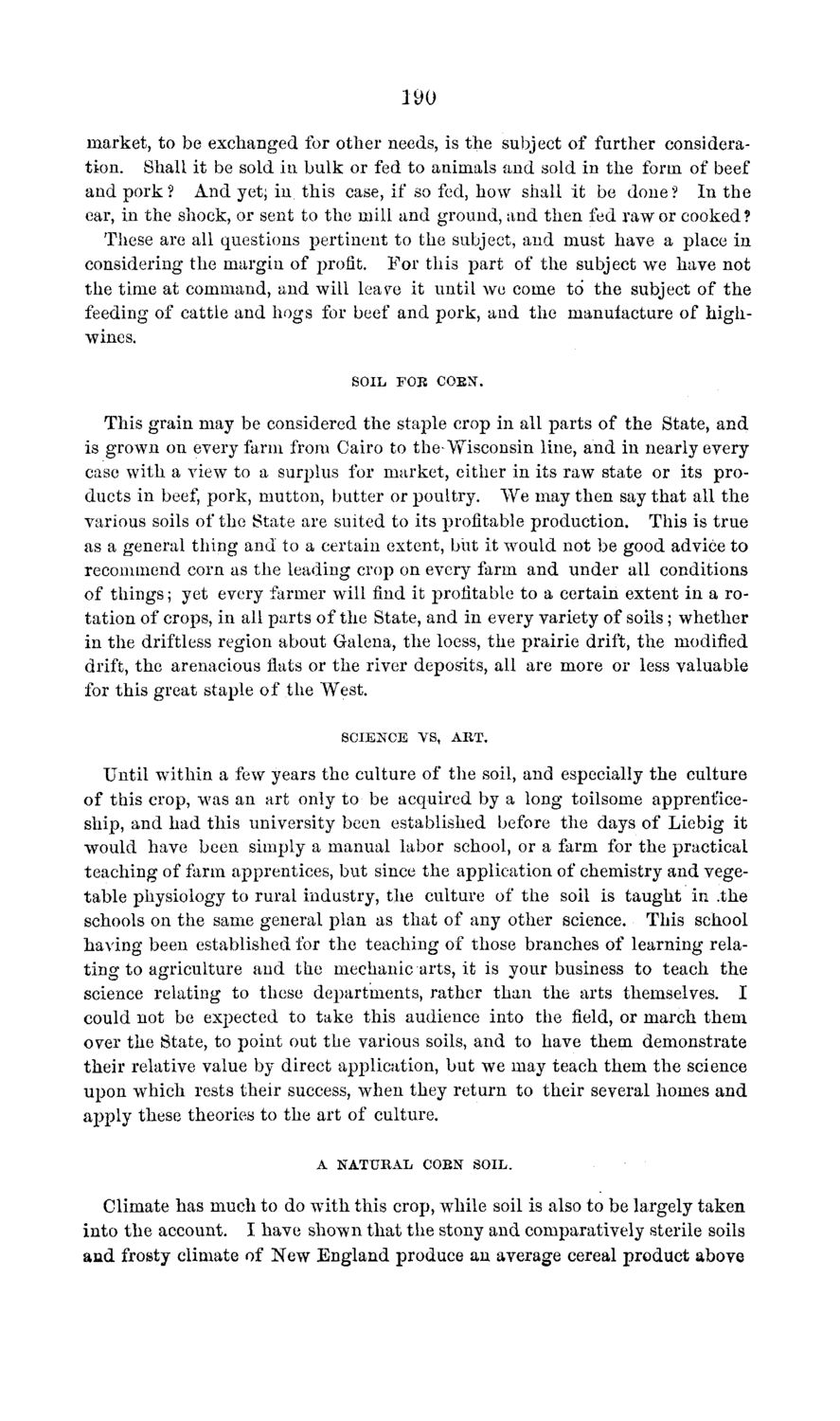| |
| |
Caption: Board of Trustees Minutes - 1869
This is a reduced-resolution page image for fast online browsing.

EXTRACTED TEXT FROM PAGE:
190 market, to be exchanged for other needs, is the subject of further consideration. Shall it be sold in bulk or fed to animals and sold in the form of beef and p o r k ? And yet; in this case, if so fed, how shall i t be done? In t h e ear, in the shock, or sent to the mill and ground, and then fed raw or cooked ? These are all questions pertinent to the subject, and must have a place in considering the margin of profit. For this part of the subject we have not the time at command, and will lea^e it until we come to the subject of the feeding of cattle and hogs for beef and pork, and the manufacture of highwines. SOIL F O R COEN. This grain may be considered the staple crop in all parts of the State, and is grown on every farm from Cairo to the-Wisconsin line, and in nearly every case with a view to a surplus for market, either in its raw state or its products in beef, pork, mutton, butter or poultry. We may then say that all t h e various soils of the State are suited to its profitable production. This is true as a general thing and to a certain extent, biit it would not be good advice to recommend corn as the leading crop on every farm and under all conditions of things; yet every farmer will find it profitable to a certain extent in a rotation of crops, in all parts of the State, and in every variety of soils; whether in the driftless region about Galena, the loess, the prairie drift, the modified drift, the arenacious flats or the river deposits, all are more or less valuable for this great staple of the West. SCIENCE VS, A R T . Until within a few years the culture of the soil, and especially the culture of this crop, was an art only to be acquired by a long toilsome apprenticeship, and had this university been established before the days of Liebig it would have been simply a manual labor school, or a farm for the practical teaching of farm apprentices, but since the application of chemistry and vegetable physiology to rural industry, the culture of the soil is taught in .the schools on the same general plan as that of any other science. This school having been established for the teaching of those branches of learning relating to agriculture and the mechanic arts, it is your business to teach the science relating to these departments, rather than the arts themselves. I could not be expected to take this audience into the field, or march them over the State, to point out the various soils, and to have them demonstrate their relative value by direct application, but we may teach them the science upon which rests their success, when they return to their several homes and apply these theories to the art of culture. A N A T U R A L COBN SOIL. Climate has much to do with this crop, while soil is also to be largely taken into t h e account. I have shown that the stony and comparatively sterile soils and frosty climate of New England produce an average cereal product above
| |